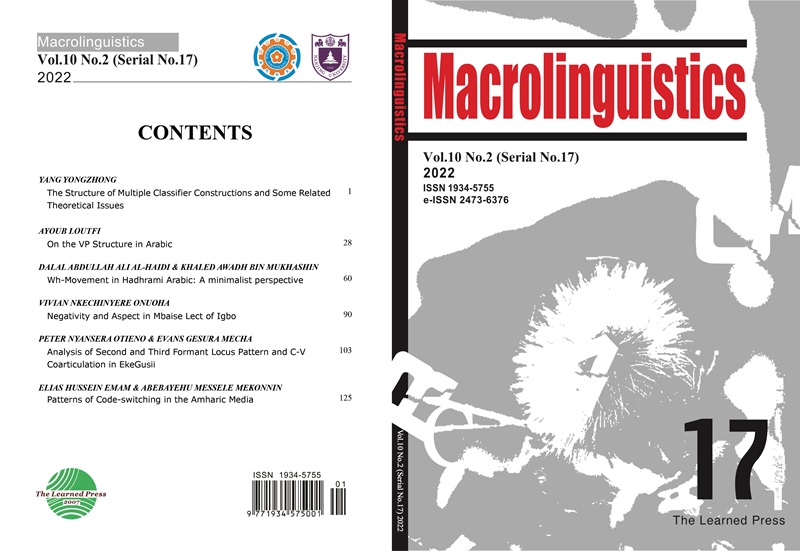社会文化视角下傣族语和泰语人称代词研究
引用次数: 0
摘要
:傣族语言与泰语关系密切,傣族语言与泰语都属于泰加泰语系壮东语系的壮台支(Diller & Edmondson & Luo, 2008:7)。在漫长的历史发展过程中,傣族语和泰语都形成了自己完整的人称代词体系。由于遗传关系,傣族语和泰语的人称代词有很多相似之处,包括:尊长、某些人称代词意义相同、可以用姓名、职务称谓或亲属称谓代替人称代词称呼他人、有专门的僧侣人称代词等。另一方面,这些代词系统也有一些差异。例如,在泰语人称代词系统中,性别是有区别的,但在傣乐语中却没有这种区别。此外,泰语有专门的王室人称代词,但傣乐语没有这些代词。影响傣族语和泰语人称代词使用的因素有:社会等级、人际关系、宗教信仰和政治制度。说话者必须根据情景和社会等级语境仔细注意人称代词的使用。本文章由计算机程序翻译,如有差异,请以英文原文为准。
The Study of Personal Pronouns of Dai Le and Thai Languages from Social Culture Perspective
: The Dai Le and Thai languages are closely related, and both of Dai Le and Thai languages belong to the Zhuang-Tai branch of the Zhuang-Dong group of Tai-Kadai Language Family (Diller & Edmondson & Luo, 2008:7). Throughout their long historical development , both Dai Le language and Thai language have formed their own complete systems of personal pronouns. Due to their genetic relationship, the personal pronouns of Dai Le and Thai languages have a lot of similarities, including: showing respect for seniority, sharing meanings for some personal pronouns, can use name, position title or kinship terms for addressing others instead personal pronouns, and having dedicated personal pronouns for monks. On the other hand, these pronoun systems also have some differences. For instance, gender is distinguished in the Thai personal pronoun system, but this distinction is not made in the Dai Le language. Furthermore, the Thai language has dedicated personal pronouns for royal, but the Dai Le language lacks these pronouns. The factors that influence the use of personal pronouns in Dai Le and Thai languages are as follows: social hierarchy, interpersonal relationships, religious belief, and political system. Speakers must pay careful attention to the use of personal pronouns depending on situational and social hierarchical contexts.
求助全文
通过发布文献求助,成功后即可免费获取论文全文。
去求助
来源期刊
自引率
0.00%
发文量
83
审稿时长
20 weeks
期刊介绍:
Macrolinguistics (ISSN 1934-5755, e-ISSN 2473-6376) is an international academic journal which is specialized in research papers of non-Indo-European linguistics. It is published biannually by The Learned Press and funded by the Double First-Class Initiative of Nanjing University. It aims at contributing to the complementarity and interaction of linguistic research worldwide.

 求助内容:
求助内容: 应助结果提醒方式:
应助结果提醒方式:


